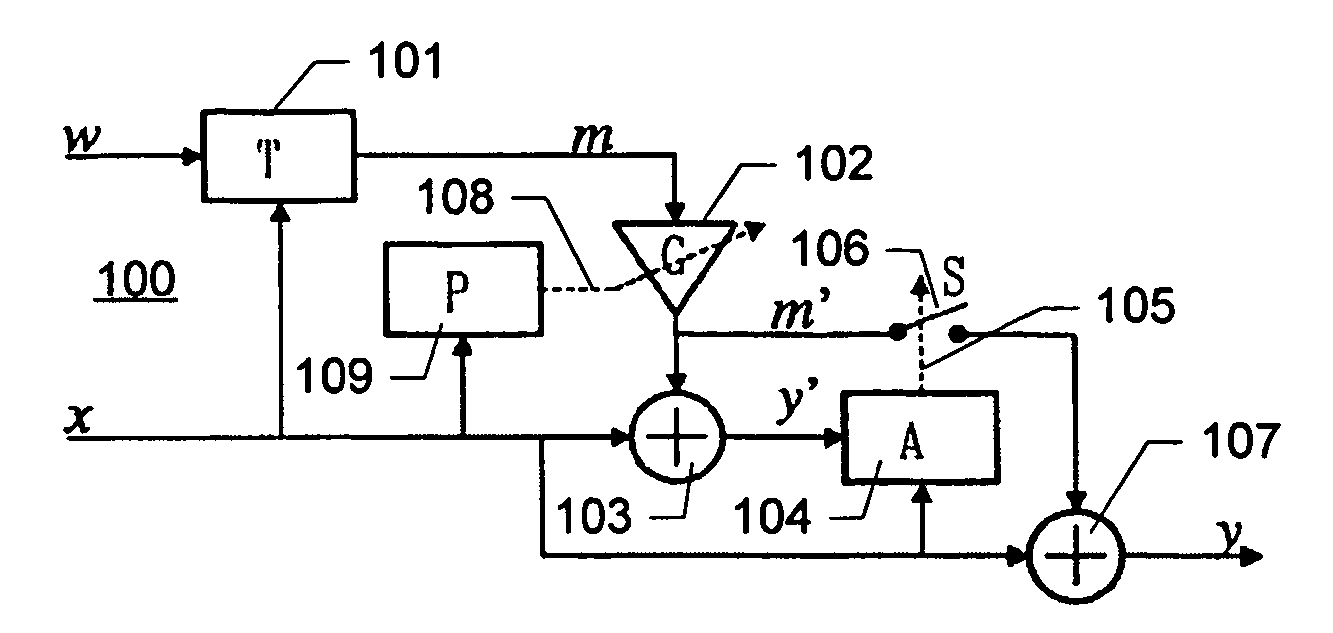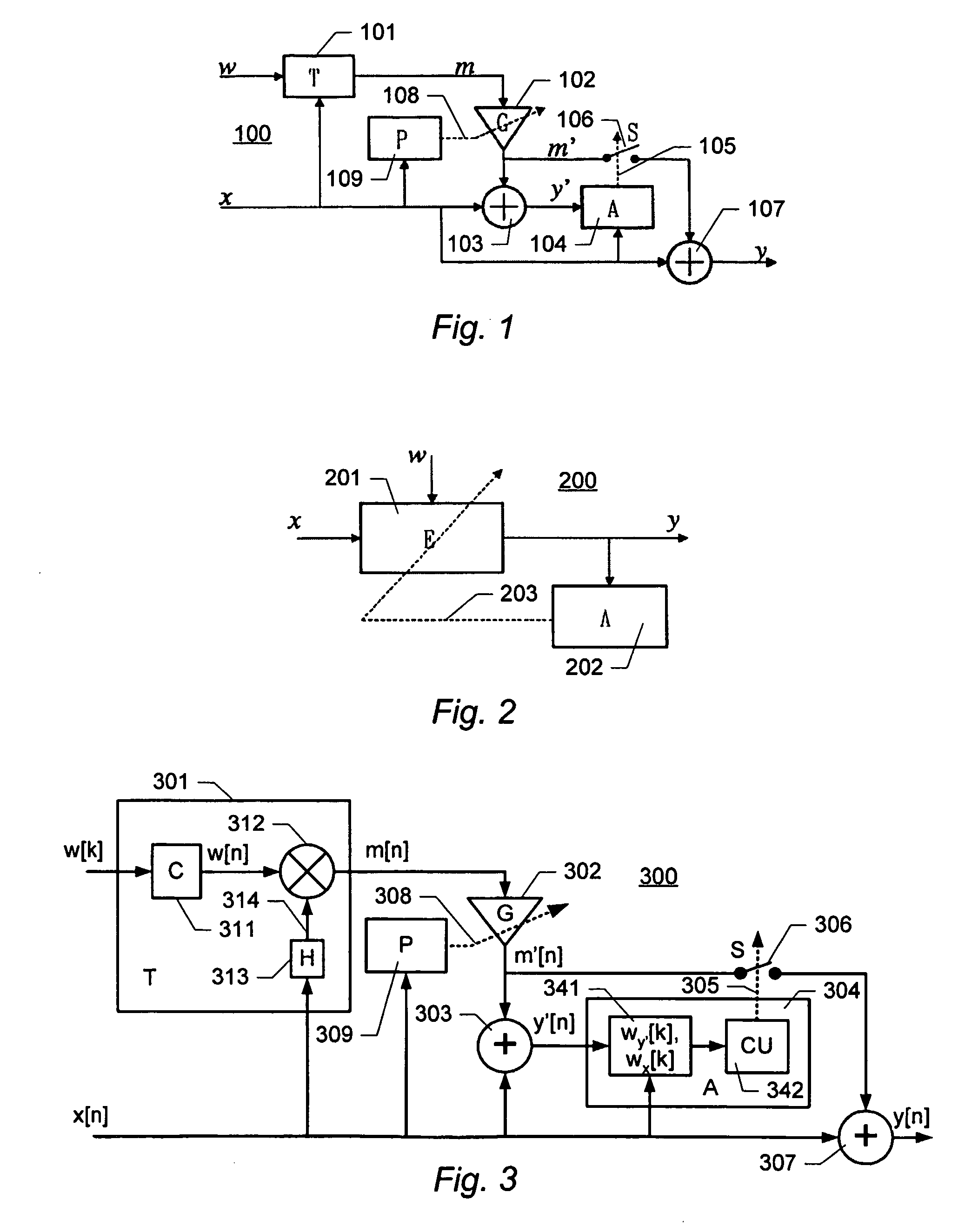Watermark Embedding
a technology of information signals and watermarks, applied in the field of information signal embedding, can solve the problems that the watermark signal does not maintain the optimal balance between robustness and perceptibility, and achieve the effects of reducing the robustness of the watermark, avoiding unnecessary modifications of the information signal, and improving the perceptibility of the watermark signal
- Summary
- Abstract
- Description
- Claims
- Application Information
AI Technical Summary
Benefits of technology
Problems solved by technology
Method used
Image
Examples
Embodiment Construction
[0051]FIG. 1 shows a schematic block diagram of an embodiment of a system for embedding a watermark. The watermark embedder generally designated 100 receives an information signal x and a watermark signal w including a predetermined watermark payload to be embedded in the information signal x.
[0052]The embedder 100 comprises a watermark transformation unit 101 that receives the watermark signal w and the information signal x and generates a modifier signal m according to a predetermined watermarking scheme. The modifier signal m is generated such that it may be combined with the information signal x. For example, the processing performed by the watermark transformation unit 101 may comprise a modulation of the watermark signal, or the like. An example of a transformation unit will be described in connection with an audio watermark embedder below. The modifier signal m is scaled by a gain control unit 102 resulting in a scaled modifier signal m′. The gain control unit 102 is controll...
PUM
 Login to View More
Login to View More Abstract
Description
Claims
Application Information
 Login to View More
Login to View More - R&D
- Intellectual Property
- Life Sciences
- Materials
- Tech Scout
- Unparalleled Data Quality
- Higher Quality Content
- 60% Fewer Hallucinations
Browse by: Latest US Patents, China's latest patents, Technical Efficacy Thesaurus, Application Domain, Technology Topic, Popular Technical Reports.
© 2025 PatSnap. All rights reserved.Legal|Privacy policy|Modern Slavery Act Transparency Statement|Sitemap|About US| Contact US: help@patsnap.com



